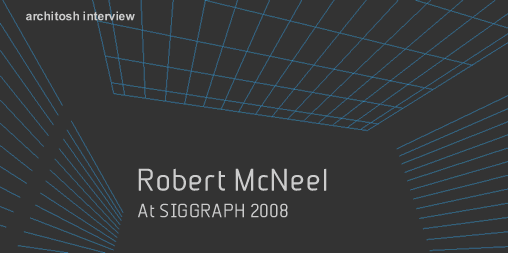Continued from page 1
Sure, but keep in mind that Grasshopper is just a user-interface on top of a bunch of Windows code. Something like this is possible for OS X, but it will require finding an OS X user interface designer guru that can write code.
Are you saying Grasshopper is just Windows code on top of a C-language code core and that all you need is just a good OS X GUI designer to build the front end to the core of Grasshopper? Is that what you are saying?
Not exactly. Grasshopper is built on Microsoft’s .NET using the Windows GUI, et cetera that .NET provides. It is just UI (user interface) calls into the .NET libraries. Yes…it is possible to use one of the .NET clones but we would need a Windows programmer that knows both .NET and OS X UI. I think it would be easier for an OS X programmer to just start over. Assuming that OS X has a rich set of development tools like .NET.
Okay I understand now. That makes it much clearer. What needs to happen is you need an OS X programmer who knows if Apple’s Xcode and Cocoa development environment has equivalent functions to call into from an OS X (front end) user interface.
It is hard to explain to people how little code is needed with .NET. I expect if Grasshopper was written in C or C++ calling standard Windows GUI calls it would have taken at least 10 times longer to write.
What initiated the Grasshopper project? Where it is going?
Like everything we do it came from the users. Mostly out of frustration designers had learning scripting to do algorithmic architectural design.
Algorithmic design in architecture is becoming more important, but in general architects are modest mathematicians.
(Bob McNeel): It started as a prototype. We had just been watching and following what some of the users were doing and what they needed and were asking for. There is no grand plan beyond that. So far it has been working well…we did run into some core design problems that needed to be corrected before we could accommodate some of the requests from our users. That does slow things down from time to time, but it is not unexpected.
So at Robert McNeel & Associates you primarily develop software based on what your current users are asking for? You don’t look at the market and your competitors and make sure you are ahead of this or that trend?
I know maybe we should have some kind of plan but it really seems like the more planning we do the more often our users explain to us how foolish we are. It just turns out to be easier to try something and watch and listen. I guess we are really more anthropologists…than software designers or engineers.
AFR: I want to go back to Rhino for a second. Is the advanced renderer in the OS X version of Rhino — the one you spoke of earlier — is that based on Flamingo 2?
No. It is using our Toucan engine which is the base renderer in Rhino. It is a very advanced renderer — we just didn’t have enough time to expose all of the user interface in version 4. More will be working in version 5 on Rhino OS X.




Reader Comments
Comments for this story are closed